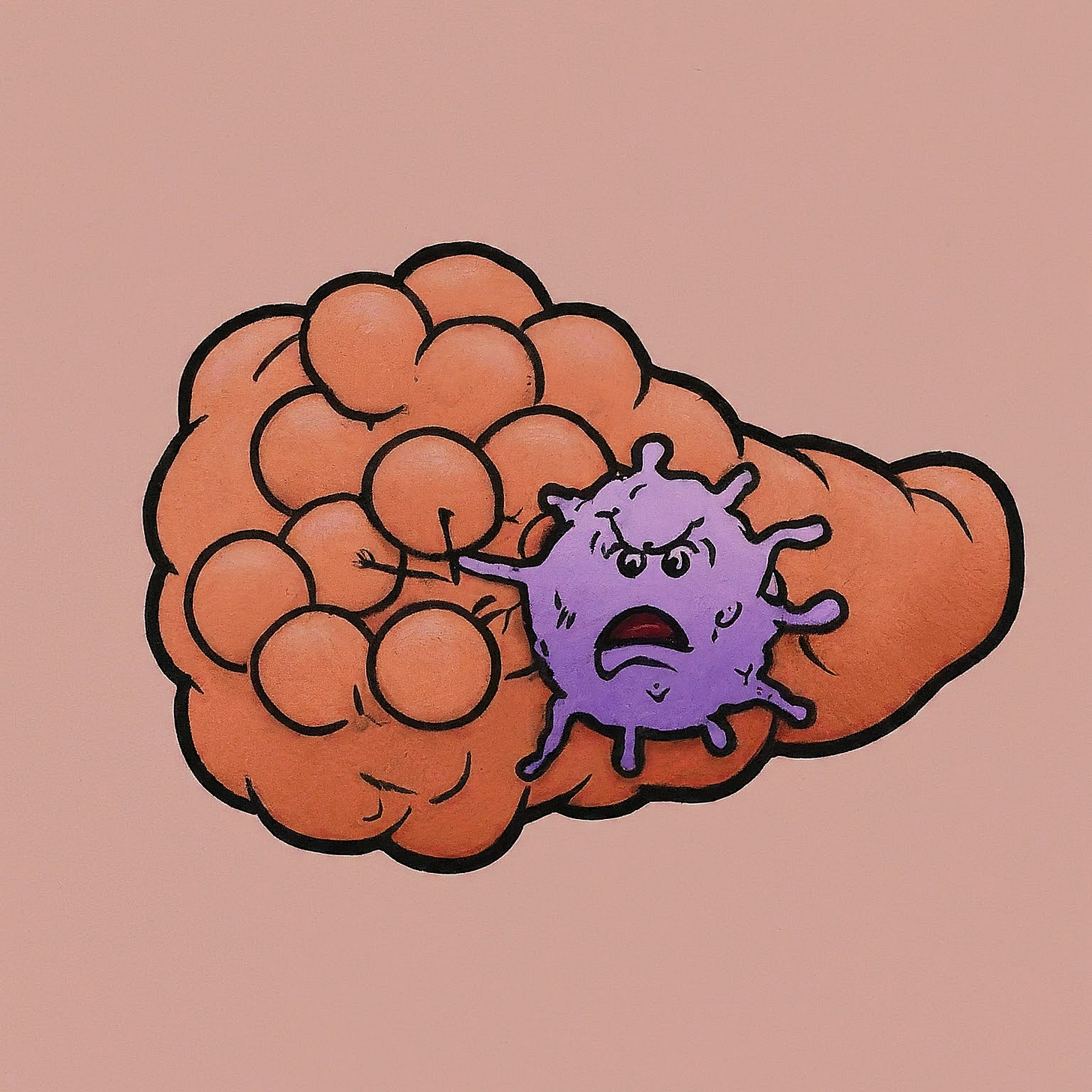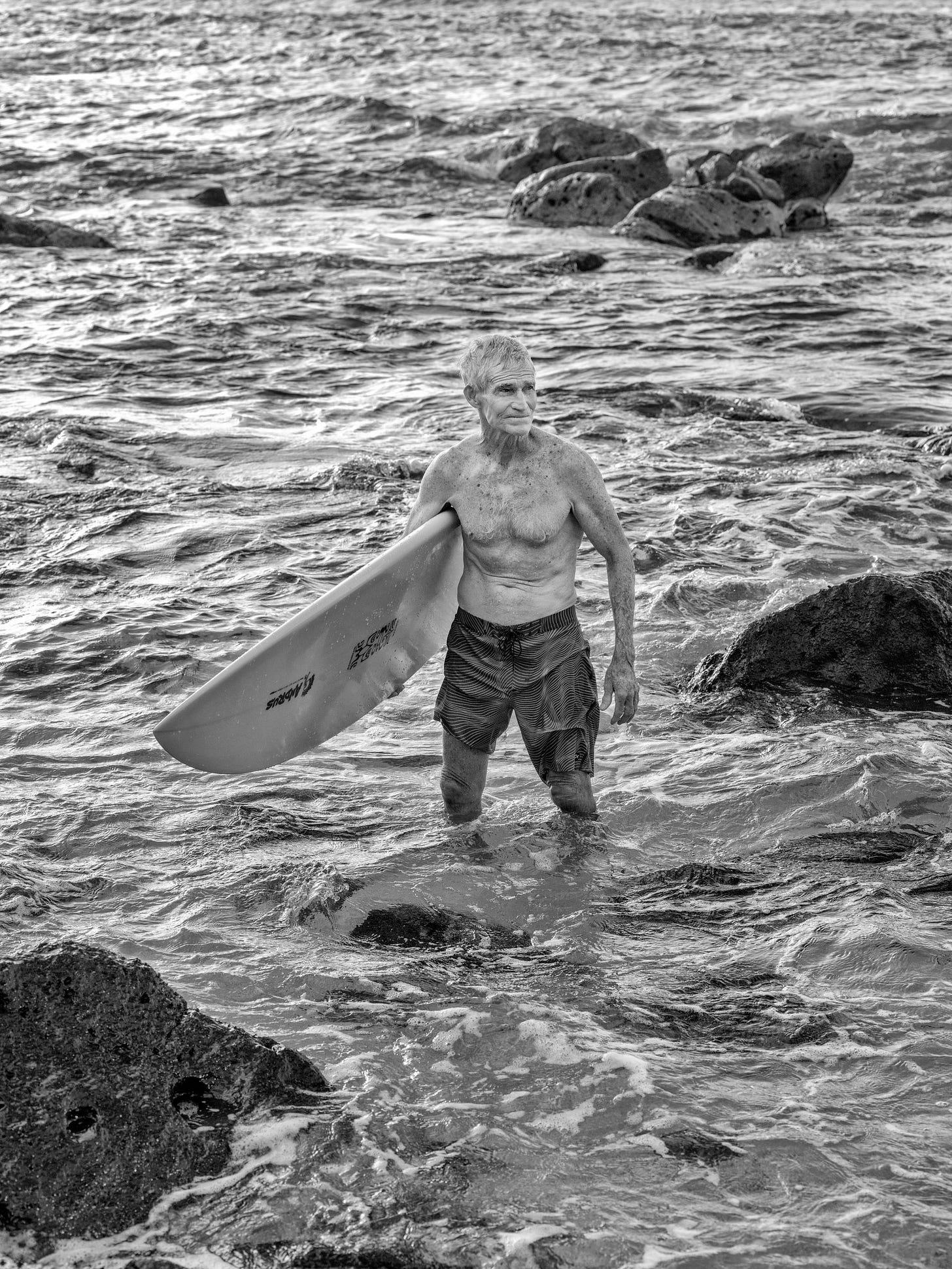Links #1: Favourite Reads from Last Week
Nanomachines, discovering a "metastasis gene", finding fun in research, and the life of a surf legend
I current have two essays in various stages of draft (they grew larger than I thought, and require more research), and another shorter draft Note discussing a book I recently read. I don’t want to publish a half-baked essay, but in order to not fall behind on publishing cadence, I’m trying something new: every week I’ll post a list of articles I found really interesting and summarize or describe what I particularly liked about them. This pushes me to write about something as soon as I read it, rather than save it for some later date. (I sometimes write these short blurbs as private notes, but not consistently, so this also encourages more writing in general).
I’m also going to use this format to experiment with finding appropriate art/photographs or creating AI art for each article — my small step to discover, learn about, and incorporate more artwork, and play with the new, fancy AI tools.
A Surf Legend’s Long Ride
by William Finnegan
This is a beautiful, poignant profile of Jock Sutherland, a legendary Hawaiian surfer, by one of my favorite writers, William Finnegan. If you can only read one of the essays mentioned here, and you have no interest in surfing, I’d still recommend this. Finnegan himself is an extremely skilled surfer, so you get his characteristic eloquence in describing waves and surfing techniques, as well as his acute perceptiveness, which, when combined, paint a candid picture of Jock’s life among the waves and roofs of the North Shore and the Oahu wilderness.
At 75, he still surfs in the same spot he did since the 1950s. He also continues to work as a roofer, first starting in the 70s, and seemingly as comfortable among their steep inclines as he is in the middle of a two-storey swell. But it’s much more than surfing. The essay is a portrait of craft and obsession and love and community and skill, which results in, as Finnegan puts it, a “demonstration of basically incomprehensible mastery”. Luckily, it’s written by someone who also possesses “incomprehensible mastery”, so this might be as insightful as it gets. Bask in its beauty.
(Related story: I was sitting in the café inside the Legion of Honor, William Finnegan’s memoir, Barbarian Days: A Surfing Life on the table (I’m re-reading a favorite), when an elderly man who had been sitting a couple of tables over came by. He pointed at the book and informed me, a joyous spirit in his voice, that the upcoming issue of The New Yorker is going to have an article written by Finnegan, about the legendary surfer Jock Sutherland, who’s 75, and still surfing. I, still a little startled, excitedly told him that I had in fact seen the article on their website and had saved it to read later. A short little back-and-forth later, as he made his leave, I thanked him for coming over to tell me. I wish I could tell him that that small interaction made my day. Now, after finishing the article, I wish I could tell him how incredible it is.)

How Will Nanomachines Change the World?
by Dhruv Khullar
A really well written look into the current state of nanomachines; a good combination of historical context, descriptive behind-the-scenes reporting of scientists’ work, and commentary on the potential benefits and risks. Examples include using nanomachines to invade and kill antibiotic-resistant bacteria, harvesting rare metals from seawater, and the terrifying possibility of it starting to display emergent properties.
One particularly bonkers thing I learned was that, in 2006, a chemist named James Tour created the world’s first motor-propelled “nanocar”, roughly the width of a single strand of DNA. Just like a car has wheels connected to an axle and chassis, this nanocar had “buckyballs” — round formations of carbon — connected to a hydrogen and carbon axle and chassis. The car is “driven” by shining a UV laser on it, “causing the motor to spin, the wheels to rotate, and the vehicle to speed forward.” That’s not all. In 2017, there was an international nanocar race in the South of France, where “scientists peered at their creations using a scanning tunnelling microscope and cheered them on.” (Tour’s team won; their nanocar raced at an average speed of 95 nanometres per hour.)
I mean, this would be shocking news to me if this race happened last week, but it was 7 years ago. To make this clearly entertaining event more mainstream, my pitch is to create a spin-off of Drive to Survive, where scientists create and watch nanocars race to enter a lethal antibiotic-resistant bacteria and kill it — so, you know, literally drive to survive. Anyone have contacts in Netflix?

Mass General Cancer Center Researchers Identify Gene That Helps Cancer Cells Spread Throughout the Body
by Liz Murphy
When silenced, the Gstt1 gene that researchers found prevents cancer cells from spreading by inhibiting their ability to alter the surrounding environment to maximally benefit their growth. This prevents tumors, essentially, from being able to build a comfortable home where they can thrive. The finding opens the door to potential novel therapeutics, particularly against the dangerously venturous forms of pancreatic cancer.
research as leisure activity
by Celine Nguyen
This is a wonderful essay about trying to find joy in intellectual discovery, which can sometimes turn into a daunting task. It goes over, firstly, what research roughly is, what it means to do it for leisure (versus, say professionally or academically), and what qualities ‘research as leisure’ entail. When reading something, I often finding myself enjoying the initial discovery of something new — “woah, this is so interesting” — but later when I dive down the rabbit hole, follow the diverging threads, learn more details and try to write a coherent essay on the topic, I get bogged down, overwhelmed by just how much I don’t know or how much detail there truly is, and want to fling whatever awful draft I have into the ocean. This is a great resource and reminder — with tons of wonderful examples — on how that process, which will often be challenging, can and should nonetheless be fun.




thank you so much for reading sharing my research as leisure post!! I also appreciated your reflection on the fear/vulnerability of trying to turn one's research into a coherent output: "when I dive down the rabbit hole, follow the diverging threads, learn more details and try to write a coherent essay on the topic, I get bogged down, overwhelmed by just how much I don’t know or how much detail there truly is, and want to fling whatever awful draft I have into the ocean"
I'm sadly in that stage right now—fingers crossed we both get through it! ime progress is nonlinear in projects…but putting in a linear-ish amount of time (a little bit, nearly every day, for days/weeks/months as the project scale demands) tends to get SOMEWHERE, and usually to a satisfying outcome that seemed impossible in the earliest stages